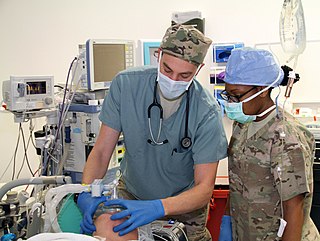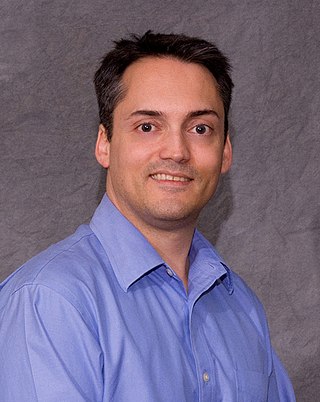
The Ether Dome is a surgical operating amphitheater in the Bulfinch Building at Massachusetts General Hospital in Boston. It served as the hospital's operating room from its opening in 1821 until 1867. It was the site of the first public demonstration of the use of inhaled ether as a surgical anesthetic on October 16, 1846, otherwise known as Ether Day. Crawford Long, a surgeon in Georgia, had previously administered sulfuric ether in 1842, but this went unpublished until 1849. The Ether Dome event occurred when William Thomas Green Morton, a local dentist, used ether to anesthetize Edward Gilbert Abbott. John Collins Warren, the first dean of Harvard Medical School, then painlessly removed part of a tumor from Abbott's neck. After Warren had finished, and Abbott regained consciousness, Warren asked the patient how he felt. Reportedly, Abbott said, "Feels as if my neck's been scratched". Warren then turned to his medical audience and uttered "Gentlemen, this is no Humbug". This was presumably a reference to the unsuccessful demonstration of nitrous oxide anesthesia by Horace Wells in the same theater the previous year, which was ended by cries of "Humbug!" after the patient groaned with pain.

Anesthesiology, anaesthesiology, or anaesthesia is the medical specialty concerned with the total perioperative care of patients before, during and after surgery. It encompasses anesthesia, intensive care medicine, critical emergency medicine, and pain medicine. A physician specialized in anesthesiology is called an anesthesiologist, anaesthesiologist, or anaesthetist, depending on the country. In some countries, the terms are synonymous, while in other countries they refer to different positions, and anesthetist is only used for non-physicians, such as nurse anesthetists.

Massachusetts General Hospital is the original and largest teaching hospital of Harvard Medical School located in the West End neighborhood of Boston, Massachusetts. It is the third-oldest general hospital in the United States with a patient capacity of 999 beds. Along with Brigham and Women's Hospital, Mass General is a founding member of Mass General Brigham, formerly known as Partners HealthCare, the largest healthcare provider in Massachusetts. Massachusetts General Hospital houses the world's largest hospital-based research program, the Mass General Research Institute, with an annual research budget of more than $1 billion in 2019. It is currently ranked as the eighth-best hospital in the United States by U.S. News & World Report.

Mass General Brigham is a not-for-profit, integrated health care system that is a national leader in medical research, teaching, and patient care. It is the largest hospital-based research enterprise in the United States, with annual funding of more than $2 billion. The system's annual revenue was nearly $18 billion in 2022. It is also an educational institution, founded by Brigham and Women's Hospital and Massachusetts General Hospital. The system provides clinical care through two academic hospitals, three specialty hospitals, seven community hospitals, home care services, a health insurance plan, and a robust network of specialty practices, urgent care facilities, and outpatient clinics/surgical centers. It is the largest private employer in Massachusetts. In 2023, the system reported that from 2017–2021 its overall economic impact was $53.4 billion – more than the annual state budget.

John Collins Warren was an American surgeon. In 1846 he gave permission to William T.G. Morton to provide ether anesthesia while Warren performed a minor surgical procedure. News of this first public demonstration of surgical anesthesia quickly circulated around the world. He was a founder of the New England Journal of Medicine and was the third president of the American Medical Association. He was the first Dean of Harvard Medical School and a founding member of the Massachusetts General Hospital.
Mehmet Toner is a Turkish biomedical engineer. He is currently the Helen Andrus Benedict Professor of Surgery at Massachusetts General Hospital (MGH) and Harvard Medical School, with a joint appointment as professor at the Harvard-MIT Division of Health Sciences and Technology (HST).
Emery Neal Brown is an American statistician, neuroscientist, and anesthesiologist. He is the Warren M. Zapol Professor of Anesthesia at Harvard Medical School and at Massachusetts General Hospital (MGH), and a practicing anesthesiologist at MGH. At MIT he is the Edward Hood Taplin Professor of Medical Engineering and professor of computational neuroscience, the associate director of the Institute for Medical Engineering and Science, and the Director of the Harvard–MIT Program in Health Sciences and Technology.
Ralph Weissleder is an American clinician scientist.
Phillip Terrence "Terry" Ragon is an American entrepreneur and philanthropist who founded InterSystems and is the current CEO.
Phillip T. and Susan M. Ragon Institute is a medical institute founded in 2009 at the Massachusetts General Hospital (MGH) by the funding from founder and CEO of InterSystems Phillip Ragon and his wife Susan Ragon to find vaccines for diseases of the immune system, particularly HIV/AIDS. The institute includes scientists from Harvard University, the Massachusetts Institute of Technology (MIT) and the MGH, a level I trauma center which is the largest teaching hospital affiliated with Harvard Medical School.
The Athinoula A. Martinos Center for Biomedical Imaging, usually referred to as just the "Martinos Center," is a major hub of biomedical imaging technology development and translational research. Bruce Rosen is the Director of the Center and Monica Langone is the Administrative Director.
Neurosurgical anesthesiology, neuroanesthesiology, or neurological anesthesiology is a subspecialty of anesthesiology devoted to the total perioperative care of patients before, during, and after neurological surgeries, including surgeries of the central (CNS) and peripheral nervous systems (PNS). The field has undergone extensive development since the 1960s correlating with the ability to measure intracranial pressure (ICP), cerebral blood flow (CBF), and cerebral metabolic rate (CMR).
Martin L. Yarmush is an American scientist, physician, and engineer known for his work in biotechnology and bioengineering. After spending 4 years as a Principal Research Associate in Chemical Engineering at MIT, in 1988 he joined Rutgers University, where he currently holds the Paul and Mary Monroe Endowed Chair in Science and Engineering and serves as Distinguished Professor of Biomedical Engineering. Yarmush is the founding director of the Center for Engineering in Medicine & Surgery (CEMS) at Massachusetts General Hospital. He is also a Lecturer in Surgery and Bioengineering at Harvard Medical School, and a member of the Senior Scientific Staff at the Shriners Hospital for Children, Boston.
Clifford J. Woolf is professor of neurology and neurobiology at Harvard Medical School and director of the F.M. Kirby Neurobiology Center at Boston Children’s Hospital. He has added greatly to the understanding of pain.

Wilderness medicine is a medical specialty concerned with medical care in remote, wilderness and expedition environments. The specialty includes prior planning, public health issues, a number of sub-specialties as well as responding to emergencies. One modern definition of wilderness medicine is "medical care delivered in those areas where fixed or transient geographic challenges reduce the availability of, or alter requirements for, medical or patient movement resources".

James Tayloe Gwathmey, M.D. was an American physician and the first president of the American Association of Anesthetics. A pioneer of early anesthetic devices for medical use, he co-authored the first comprehensive textbook on the subject of medical anesthetics, titled Anesthesia, which was published in 1914. For this and other contributions to anesthesiology, which included innovations in administering anesthetics to war wounded and in obstetrics, Gwathmey was hailed at the time of his death as the "Father of Modern Anesthesia."
Patrick Lee Purdon is an American biomedical engineer whose research focuses on neuroscience, neuroengineering, and clinical applications. He holds the Nathaniel M. Sims Endowed Chair in Anesthesia Innovation and Bioengineering at Massachusetts General Hospital and is an associate professor of anaesthesia at Harvard Medical School. Purdon received his Ph.D. in biomedical engineering from Massachusetts Institute of Technology in 2005. His research in neuroengineering encompasses the mechanisms of anesthesia, Alzheimer’s disease and brain health, anesthesia and the developing brain, neural signal processing, and the development of novel technologies for brain monitoring. He has published over 90 peer-reviewed publications, is an inventor on 16 pending patents, and is a Fellow of the American Institute for Medical and Biological Engineering. Purdon has won many awards, including the prestigious National Institutes of Health Director’s New Innovator Award, and his work has been covered in the popular media, including programs on Radiolab and NPR.

Todd Mackenzie Allen is a Canadian-born immunologist and virologist at the Ragon Institute of MGH, MIT and Harvard, and a Professor of Medicine at Harvard University. He is a specialist in HIV vaccine design and the sequence evolution and diversity of HIV and hepatitis C virus (HCV). More recently, his work is focused on developing novel immunotherapeutic approaches towards a functional cure of HIV, including chimeric antigen receptor (CAR) T cell immunotherapy and gene editing approaches capable of protecting against HIV infection.
George Alexander Mashour is an American anesthesiologist.
Jayaraj Rajagopal is an Indian-American physician-scientist. He is the Bernard and Mildred Kayden MGH Research Institute Chair and Professor of Medicine at Harvard Medical School. He founded and serves as the Chief of the Stanbury Physician-Scientist Pathway at the Massachusetts General Hospital Department of Medicine. His laboratory focuses on epithelial biology, lung stem cell biology, regenerative biology, and lung diseases.








